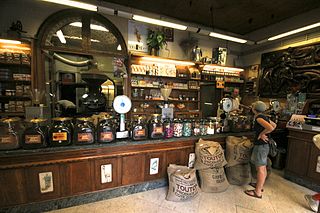
Italians are well known for their special attention to the preparation, the selection of the blends, and the use of accessories when creating many types of coffees. Many of the types of coffee preparation known today also have their roots here. The main coffee port in Italy is Trieste where there is also a lot of coffee processing industry. Italian coffee consumption, often espresso, is highest in the city of Trieste, with an average of 1500 cups of coffee per person per year. That is about twice as much as is usually drunk in Italy.

Caffè latte, often shortened to just latte in English, is a coffee drink of Italian origin made with espresso and steamed milk. Variants include the chocolate-flavored mocha or replacing the coffee with another beverage base such as masala chai, mate, matcha, turmeric or rooibos; alternatives to milk, such as soy milk or almond milk, are also used.
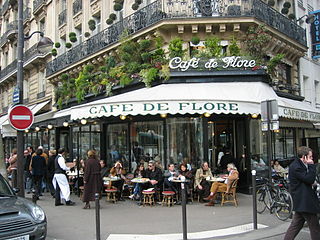
A coffeehouse, coffee shop, or café is an establishment that primarily serves various types of coffee, espresso, latte, and cappuccino. Some coffeehouses may serve cold drinks, such as iced coffee and iced tea, as well as other non-caffeinated beverages. A coffeehouse may also serve food, such as light snacks, sandwiches, muffins, fruit, or pastries. In Continental Europe, some cafés also serve alcoholic beverages. Coffeehouses range from owner-operated small businesses to large multinational corporations. Some coffeehouse chains operate on a franchise business model, with numerous branches across various countries around the world.
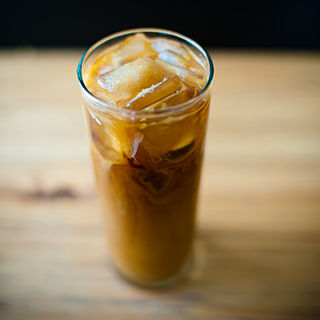
Iced coffee is a coffee beverage served cold. It may be prepared either by brewing coffee normally and then serving it over ice or in cold milk or by brewing the coffee cold. In hot brewing, sweeteners and flavoring may be added before cooling, as they dissolve faster. Iced coffee can also be sweetened with pre-dissolved sugar in water.

Velika Kladuša is a town and municipality located in Una-Sana Canton of the Federation of Bosnia and Herzegovina, an entity of Bosnia and Herzegovina. It is situated in the far northwest of Bosnia and Herzegovina, located near the border with Croatia. As of 2013, it has a population of 40,419 inhabitants.

Ćevapi, ćevapčići is a grilled dish of minced meat found traditionally in the countries of southeast Europe. It is considered a national dish of Bosnia and Herzegovina and Serbia and is also common in Croatia, Kosovo, Montenegro, North Macedonia, Slovenia, Bulgaria, Romania, Albania, and Slovakia.

The Viennese coffee house is a typical institution of Vienna that played an important part in shaping Viennese culture.

Kafana is a distinct type of local bistro, common in former Yugoslav countries and Albania, which primarily serves alcoholic beverages and coffee, and often also light snacks (meze) and other food. Many kafanas feature live music performances.

Skadarlija is a vintage street, an urban neighborhood and former municipality of Belgrade, Serbia, located in the Belgrade municipality of Stari Grad. Skadarlija partially preserves the ambience of traditional urban architecture, including archaic urban organization, and is known as the main bohemian quarter of Belgrade, similar to Montmartre in Paris. Since 1967, Skadarlija has been protected by law as a spatial cultural-historical unit.

Dorćol is an affluent urban neighborhood of Belgrade, the capital of Serbia. It is located in Belgrade's municipality of Stari Grad.

Macedonian cuisine is the traditional cuisine of North Macedonia. It is influenced by Ottoman and Balkan cuisines. The relatively warm climate of the country provides excellent growth conditions for a variety of vegetables, herbs and fruits. Macedonian cuisine is also noted for the diversity and quality of its dairy products, wines, and local alcoholic beverages, such as rakija. Tavče gravče and mastika are considered the national dish and drink of North Macedonia.

Coffee culture is the set of traditions and social behaviors that surround the consumption of coffee, particularly as a social lubricant. The term also refers to the cultural diffusion and adoption of coffee as a widely consumed stimulant. In the late 20th century, espresso became an increasingly dominant drink contributing to coffee culture, particularly in the Western world and other urbanized centers around the globe.

Caffè Americano is a type of coffee drink prepared by diluting an espresso with hot water, giving it a different flavor from traditionally brewed coffee. Its strength varies with the number of shots of espresso and amount of water added. The name is also spelled with varying capitalization and use of diacritics: e.g., café americano.

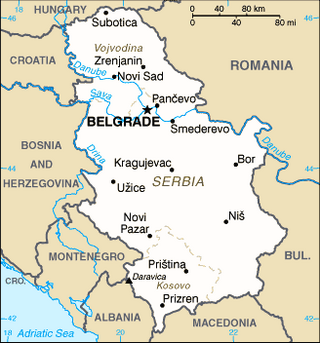
Tourism in Serbia is officially recognized as a primary area for economic and social growth. The hotel and catering sector accounted for approximately 2.2% of GDP in 2015. Tourism in Serbia employs some 75,000 people, about 3% of the country's workforce. In recent years the number of tourists is increasing, especially foreign ones for about hundred thousand arrivals more each year. In 2019, tourism generated an income of nearly $1.698 billion, hosting 3.7 million tourists, half of whom were foreigners. Chinese tourists were the most numerous foreign visitors, followed by tourists from Bosnia and Herzegovina, Bulgaria, Turkey, and Germany. In 2022, tourism earnings surged to $2.71 billion and almost 2 million foreign tourists visited the country. Major destinations for foreign tourists are Belgrade, Novi Sad and Niš, while domestic tourists prefer spas and mountain resorts. Eco-friendly and sustainable tourism has also become very popular among domestic tourists, with many visiting various nature reserves and parks in the western and southern part of the country. Serbia is also known for gastronomic tourism, with Belgrade being the central meeting point with over 2000 restaurants, coffee shops, bars and nightlife venues.
Countries have cultivated coffee beans into various vehicles to satisfy needs unique to each country. Whether it be for energy, socialization, or tradition, the cultivation of coffee has served as a motivating force of the world. The modernization of coffee and its unique forms across cultures are markers of tradition and modern changes across continents. Coffee culture appears in the way in which people consume coffee, the way they make it, and where coffee is served and shared. Each of these factors combined reflects the lives of the people in these countries and the importance of coffee across the world.
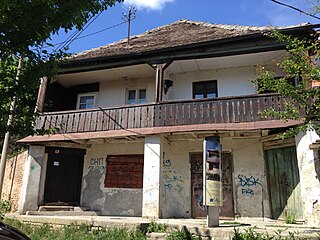
White Bear Tavern is a former kafana in Belgrade, in the municipality of Zemun. First mentioned in 1658, it is the oldest surviving edifice in the territory of modern Belgrade, not counting the Belgrade Fortress. However, Zemun developed completely independently from Belgrade for centuries and for the most part during the history two towns belonged to two different states. Zemun became part of the same administrative unit as Belgrade on 4 October 1929, lost a separate town status to Belgrade in 1934 and made a continuous built-up area with Belgrade only since the 1950s. Hence, the House at 10 Cara Dušana Street in Belgrade's downtown neighborhood of Dorćol is usually named as the oldest house in Belgrade, while the White Bear Tavern is titled as the oldest house in Zemun.

In Britain, a cafe, also known colloquially as a caff or greasy spoon, is a small, cheap eatery typically specialising in fried foods or home-cooked meals.

The vibrant and dynamic nightlife in Belgrade achieved international prominence in the early 21st century. Belgrade, the capital of Serbia, gained a reputation both due to the traditional nightlife, mostly represented by the kafanas, and the contemporary, modern nightlife, especially including splavovi, barges and floats adapted into the clubs and cafés. Belgrade often makes the lists of the cities with best clubbing and partying, discreetly shaping itself into the fun and accommodating metropolis.



















